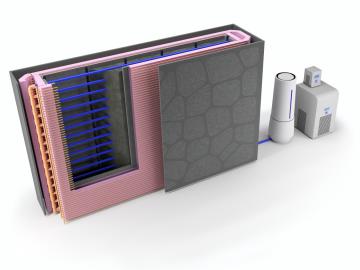
Filter News
Area of Research
- (-) Energy Science (58)
- (-) Supercomputing (16)
- Advanced Manufacturing (11)
- Biology and Environment (16)
- Building Technologies (1)
- Computational Biology (1)
- Computational Engineering (2)
- Computer Science (5)
- Fusion Energy (2)
- Isotopes (1)
- Materials (16)
- Materials for Computing (5)
- Mathematics (1)
- National Security (4)
- Neutron Science (4)
- Nuclear Science and Technology (1)
- Quantum information Science (3)
- Transportation Systems (2)
News Type
News Topics
- (-) 3-D Printing/Advanced Manufacturing (23)
- (-) Big Data (5)
- (-) Biomedical (5)
- (-) Coronavirus (4)
- (-) Machine Learning (3)
- (-) Quantum Science (3)
- (-) Summit (6)
- (-) Transportation (26)
- Advanced Reactors (1)
- Artificial Intelligence (2)
- Bioenergy (2)
- Biology (3)
- Biotechnology (1)
- Buildings (13)
- Chemical Sciences (2)
- Clean Water (4)
- Composites (9)
- Computer Science (23)
- Critical Materials (7)
- Energy Storage (22)
- Environment (17)
- Exascale Computing (1)
- Frontier (1)
- Fusion (1)
- Grid (15)
- High-Performance Computing (3)
- Hydropower (2)
- Materials (13)
- Materials Science (10)
- Mathematics (1)
- Mercury (1)
- Microscopy (2)
- Nanotechnology (2)
- Nuclear Energy (2)
- Polymers (7)
- Quantum Computing (4)
- Simulation (2)
- Space Exploration (3)
- Statistics (1)
Media Contacts

Fuel economy can take a tumble when temperatures plummet, according to the Department of Energy’s 2021 Fuel Economy Guide. Compiled by researchers at Oak Ridge National Laboratory, the guide includes several tips to improve a vehicle’s fuel performance.

Algorithms developed at Oak Ridge National Laboratory can greatly enhance X-ray computed tomography images of 3D-printed metal parts, resulting in more accurate, faster scans.

If air taxis become a viable mode of transportation, Oak Ridge National Laboratory researchers have estimated they could reduce fuel consumption significantly while alleviating traffic congestion.

Scientists from Oak Ridge National Laboratory used high-performance computing to create protein models that helped reveal how the outer membrane is tethered to the cell membrane in certain bacteria.

Oak Ridge National Laboratory researchers used additive manufacturing to build a first-of-its kind smart wall called EMPOWER.

Oak Ridge National Laboratory researchers have developed a machine learning model that could help predict the impact pandemics such as COVID-19 have on fuel demand in the United States.

Oak Ridge National Laboratory scientists evaluating northern peatland responses to environmental change recorded extraordinary fine-root growth with increasing temperatures, indicating that this previously hidden belowground mechanism may play an important role in how carbon-rich peatlands respond to warming.

Researchers at Oak Ridge National Laboratory developed a method that uses machine learning to predict seasonal fire risk in Africa, where half of the world’s wildfire-related carbon emissions originate.

Scientists have tapped the immense power of the Summit supercomputer at Oak Ridge National Laboratory to comb through millions of medical journal articles to identify potential vaccines, drugs and effective measures that could suppress or stop the
An international team of scientists found that rules governing plant growth hold true even at the edges of the world in the Arctic tundra.


